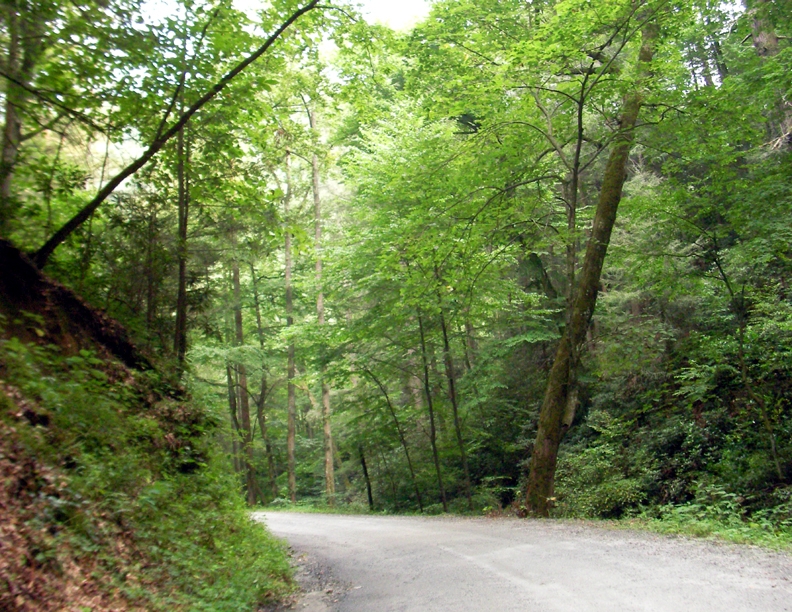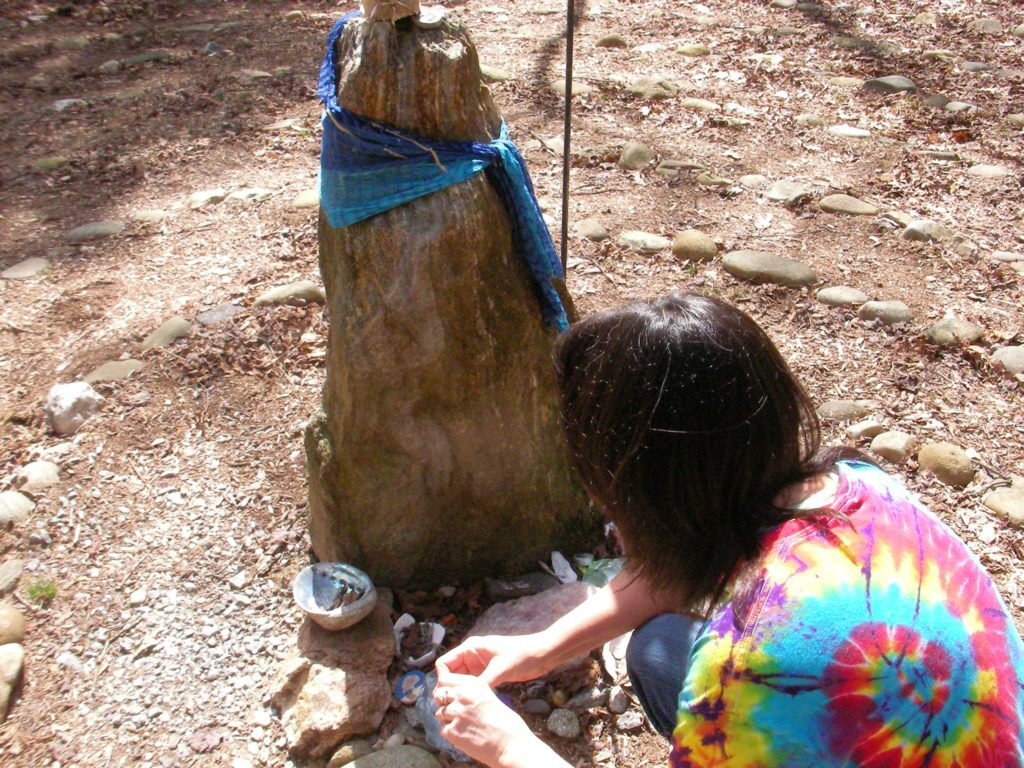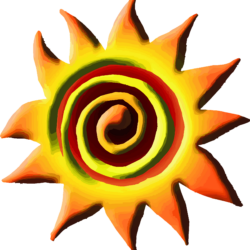One of the lessons of Coyote is that we cannot escape ourselves. We all have a dark side. We cannot escape this dark side because it is a part of us. Coyote teaches us that if we ignore our darker natures and try to pretend they don’t exist, we will be consumed by our darker natures. But if we are able to acknowledge our darker and more chaotic tendencies, we have taken the first step towards channeling their energy for creative purposes. When coyote places us before the mirror, it’s up to us what to do with what the mirror shows us.
We all contain both light and dark, order and chaos. This lesson is reflected in nature as well. If you are a frequent hiker, you have probably come upon the carcasses of dead animals in the wild. If you live in a place where there are seasonal changes, you’re probably intimately acquainted with the leaves changing color and eventually falling to the ground as they die before winter. Even the seasons themselves are divided into a darker part of the year and a lighter part of the year. These cycles of darkness and light, birth and death are not “bad” or “good.” They simply are.

Coyote’s lesson on the Road of Trials is that there is no such thing as a “bad” feeling or a “wrong” feeling. Just as the seasons change, our emotions run in cycles. These cycles and the feelings they generate are not “bad” in themselves. What may or may not be “bad” is the behavior that comes after the feeling. By acknowledging our more chaotic feelings we learn that just because we are having feelings, we don’t have to act on them. By living in the now, we learn that feelings are just feelings.
So suppose I am angry at my wife and I yell at her. She’s probably very likely to become angry in return. Now suppose instead that I’m angry at my wife and I go to her and say, “I’m angry with you, and I don’t want to be. Can we work this out?” In either of these scenarios, the feeling, anger, is the same. What is different is the way I chose to respond to the anger. If I respond badly by yelling, the behavior, and not the feeling, is the problem.
Here on the Road of Trials, Coyote will teach us a new way to walk, if we are willing to be open to the lessons. These lessons will help us to walk more fully in our own true nature.
6.5 Supernatural Aid on the Road of Trials
The Road of Trials is where our mettle is tested to see how committed we are to the path, and to the quest of living according to our true nature. Sometimes we may need Supernatural Aid to accomplish this so that we don’t have to rely solely on our own energy. In ecospirituality we can rely on Supernatural Aid from our totem animals.
Could you draw on the power and energy from your own spirit animal to help you to succeed on the Road of Trials? Shamanistic cultures throughout the world use animals as metaphors for emotions, or as teaching tools. We even do this in our own culture. People can be “as hungry as a bear” or as “quiet as a mouse” or as “gentle as a lamb” Animals and their traits are deeply rooted in our psychology. We tend to separate ourselves from nature, and to forget that people are animals too. We are part of nature, and we cannot change that, no matter how much we might try to deny it. We even use animals in our research labs, from the white mice in the psychology lab to the often horrible conditions in animal testing labs. If humans don’t have traits in common with our animal brothers and sisters, then why do we consider research on animals to be helpful at all to humans?
As human animals, our psyches are rooted in the natural world. Each of us contains within us archetypes of various animals. We instinctively know that snakes can be dangerous, just as we know we have nothing to fear from the timid rabbit. When using animals as metaphors for our own personal lives, we can draw upon the strength of these archetypes when walking the Road of Trials.
You don’t have to be a shaman in order to use animals as teaching tools, or as tools of learning. You already have within you volumes of knowledge on animals and their characteristics. You can draw on these traits to create your own personal stories and legends. We understand the world through metaphor, and animal stories are just one of the many metaphors from nature that we may use on our own personal ecospiritual journeys. Watch the animals and learn from them. See what they have to teach you.
6.6 Who are You?
Who are you really? Who is this internal observer known as your True Self? Let’s do a thought experiment to discover the nature of this entity. Think about what makes you, you. Right now you are looking at this page through your own eyes. Right now your senses are experiencing the sights, sounds, smells, and other sensations of your immediate environment. You are observing the world through your own perspective. The sum total of everything you have experienced up until this moment is contained within your head and body.

Now let’s suppose it were possible to make an exact clone of you. This clone is your age and has all of your memories and experiences. For all practical purposes this clone is identical to you in every way. Once this clone is created, would you continue to see the world through your own eyes, or would you begin to see the world through the clone’s eyes? Where is your point of view? Would it be with you or the clone?
Obviously you would continue to see the world from your own perspective, even though the clone was an exact, identical copy of you.
So what is it that makes you unique? The clone is an exact copy of you in every way except one: The way in which your clone views the world. The clone has his or her own point of view, their own perspective, on the world, just as you have your own.
What does this mean? It means you have your own unique perspective on the world, and that perspective is not a product of blood, bone, sinew, or neurons. Since your clone would be an exact replica of all of your biological and neurological functions, yet you would still see the world from your own head and not your clone’s head, this True Self cannot be solely a product of biology and material existence. It is something different. It is something eternal. It is something that is not dependent on time or matter.
It is your own internal observer. It is your own True Self.
When you encounter difficulties on the Road of Trials, it may help to remember that you are a unique child of the Universe, and that you were meant to be here, doing what you’re doing right at this moment, in this place, and in this time. When you can come to fully accept this, you will have completed the Road of Trials, and you will be ready for your Meeting with the Goddess.

